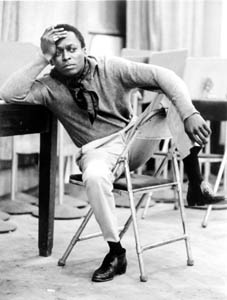Kinesthetic Prayers
As far as I understand, most contemporary theories of education understand that there are different learning styles and different learners. Some people learn by listening, these are audio learners; others are visual learners, so they best retain information that they read or see with their eyes; still others learn best through their body, by actively engaging in an activity, such as writing out information or putting together a puzzle.
Yesterday while conversating with Tamie, I began to wonder about the history of prayer. The Hebrew Scriptures are filled with very kinesthetic prayers; prayer is an experience of the body. People will weep and lament in loud voices, they will rip their clothing and sit in dust and ashes. They will dance to express prayers of joy and thanksgiving. They will set up physical representations of faith (such as digging a well or some form of a memorial). They bow and prostrate their bodies. They lift up their voices.
Somewhere along the way in the Christian tradition, prayer was turned into a mental/cognitive activity or into an inner emotional experience. This is why I wonder about the history of prayer. How did prayer get to be an exclusively inner experience? When did Christians decide that the physicality of prayer was no longer important?
I'm not sure what the answer is, but I imagine it has to do with the modern Western obsession with the "inner life" of the mind. Descartes famously (or infamously) withdrew himself from the outer world to discover a more pure, foundational truth in the rationality of his mind.
There is also something intriguing in this discussion related to gender. Traditionally, the mind has been related to the male, while the body is feminine. Women have been the ones who bear the children and nurture them, a physical activity. Men are the decision makers, the masters of mental processing. Men are the educated ones. Women take care of the "practical," physical matters.
Body energy seems to be something that is related to all forms of Eastern religious expression. Buddhism and Hinduism developed yoga and trantric practices to bring the body and the inner person into proper alignment. Muslim practice dictates prostration in prayer, stopping five times a day to physically demonstrate devotion and surrender to God. And, as I mentioned earlier, the Hebrew scriptures use many words to illustrate the intense kinesthetic energy that goes into prayer.
I tend to be someone naturally inclined toward the inner life of the mind and the emotions, primarily focusing on the mental processes. For me, it has renewed me to incorporate physical motion and acts of devotion into my acts of prayer. It becomes a time for me to let go of my thoughts and feelings and engage my body in an act of faith. Physically bowing is a release; using prayer beads allows me to direct my energies of prayer into the world; and speaking my prayers also connects my inner life with the external world.







6 comments:
This was an interesting post, Erdman.
How so?
Now you have me curious.
I can't really put it into words (winky smiley). I don't know much about the Shakers, but in my charismatic phase I attended a few prayer services that incorporated dance. Tami's blog includes a quote from Rumi -- he was a whirling Dervish.
Would you say that running or bicycling has prayerful features for you? When I run I tend to let my mind wander, and it lands on various topics I might not otherwise have considered. I once worked with a guy from India who used to say his mantra while running.
Ah sweet lightpost. I love you. I've been thinking more about this conversation too. I stopped by the Episcopal church today to see if they had a labyrinth....and they don't! Poo for us not having more physical practices.
"Sweet lightpost"?
Yes. I would say that running has prayerful features. I read an article in Runner's World a few years back about how running can be a meditative practice.
When I run (or go cycling, which is more often the case these days) I find that my mind goes through ups and downs. I feel like there are some "free association" moments like you describe, where I think about things that I wouldn't ever think about. Sometimes these things seem worthwhile and lead to some breakthroughs. Most of the time it is just the feelings and events of my life flowing through my mind in a way that is not entirely coherent....but every once in a while something will stick.
Other times, I am just kind of zoned out of my mind, engaged in the physical activity.
In yet other times, I feel very prayerful, in a more traditional sense.
In all things, it seems as though cycling/running/etc. is a very contemplative experience that kind of feels like I am purifying myself. That is, even though I don't always know why, I usually feel more focussed and aware when I am done with a long workout. That's also kind of how meditation works, even when my mind is going all over the place. That is, even when it doesn't "feel" like an ideal meditation experience, somehow I walk away knowing it was very worthwhile.
Post a Comment